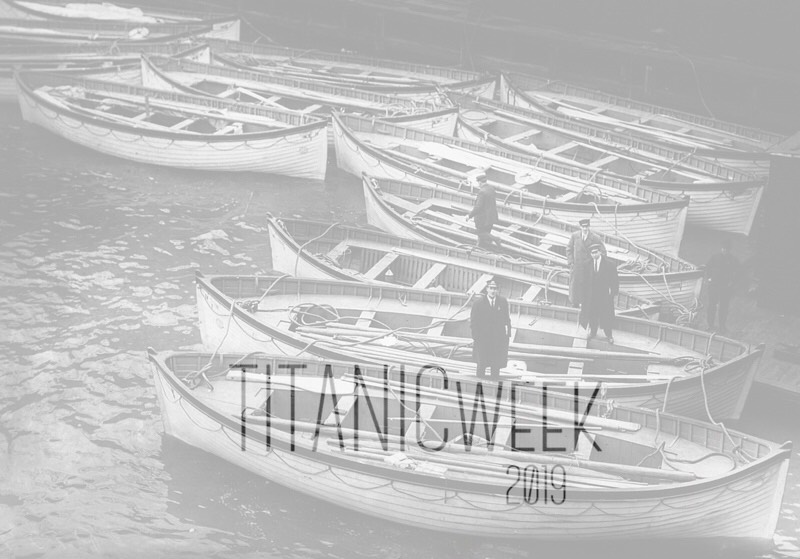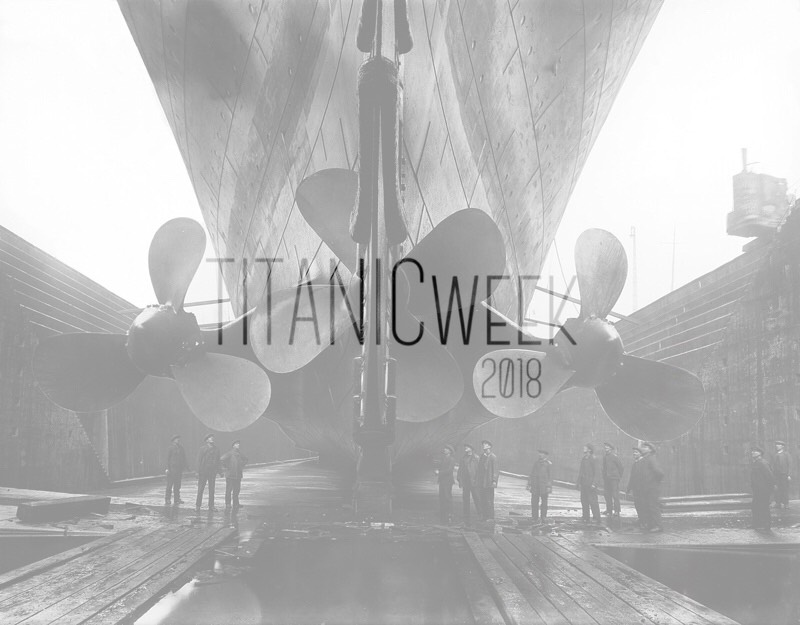"Too Frozen and Numb to Think It Strange": The 'Unsinkable' Violet Jessop & Arthur John Priest
Incredibly, Titanic had two famously unlucky lucky passengers, both of them crew.
Stewardess Violet Jessop, whose name those with even a passing interest in Titanic will probably recognize, was born in Argentina to Irish parents; after her father died when she was 16, the whole family relocated to England. Her mother was reportedly a ship stewardess, and at 21, Violet set out to become one.
But this turned out to be difficult. Violet was a beautiful girl, and prospective employers considered this a flaw because most stewardesses were middle-aged and matronly. She clearly found a job eventually--and received at least three marriage proposals during her time at sea.

Violet Jessop during her service in the First World War.
Violet was 24 years old when she boarded Titanic. She had been reticent to go, as she was happy on Titanic's older sister, Olympic--despite having been on board when it collided with the H.M.S. Hawke on September 20, 1911. But Violet's friends had insisted that Titanic would be "a wonderful experience," so she relented, taking a horse-drawn carriage out to Southampton.
Violet spent time on board doing her job, though she did make reference in her memoirs to being friends with ship violinist Jock Hume.
She also wrote with great affection for Thomas Andrews, White Star's Chief Designer, "Often during our rounds we came upon our beloved designer going about unobtrusively with a tired face but a satisfied air. He never failed to stop for a cheerful word, his only regret that we were 'getting further from home.'"

Thomas Andrews, of whom Violet Jessop wrote with much admiration in her memoirs.
Violet was "comfortably drowsy" when the collision occurred, and went up on deck. She stood on deck with other stewardesses and was eventually asked to enter a lifeboat--possibly Lifeboat 16, which means she was on port-side, Second Officer Charles Lightoller's jurisdiction--to set an example to those female passengers who were afraid to leave Titanic. And here is where yet another Titanic mystery arises.
Violet claimed that as the lifeboat was being lowered, an unnamed officer dropped a wriggly bundle down to her. "'Here, Miss Jessop. Look after this baby.'" Violet pressed the mystery baby to her throughout the night, until she boarded Carpathia.
I was still clutching the baby against my hard cork lifebelt I was wearing when a woman leaped at me and grabbed the baby, and rushed off with it, it appeared that she put it down on the deck of the Titanic while she went off to fetch something, and when she came back the baby had gone. I was too frozen and numb to think it strange that this woman had not stopped to say 'thank you'
While this might present as terribly good drama, the story of this baby has never been verified.
To date, there is no record of an untended baby in Lifeboat 16 aside from 5-month-old Assed Thomas, who was given to First-Class passenger Edwina Troutt to look after.
Now, Edwina herself did say there were "not less than a dozen babies" on board. But that should not be taken to mean that if there were that many "babies" on board, they were all , in fact, infants--children were commonly referred to as babies.
In spite of the Titanic disaster, Violet was somehow undeterred from the sea and White Star. And so, in 1914, Violet Jessop was aboard on Titanic's younger sister, the RMS Britannic, which has been converted to a hospital ship to aid in the First World War. Violet was working as a Nurse of the Red Cross.

H.M.H.S. Britannic, Titanic's younger sister, which became a medical vessel during the Great War.
On November 21, 1916, an explosion throttled Britannic as she cruised the Aegean; speculation still swings between a torpedo and an underwater mine. Whichever it was, she started taking on water. Fast.
Britannic sank in just 55 minutes--compare that to Titanic's 2 hours and 40 minutes, and Titanic broke in half. But because of the Titanic's tragedy, Britannic's casualty count was far smaller at only thirty deaths.
And yet, Violet was almost one.
Of course, if the officers had waited for orders from the bridge, the death toll may well have been zero. This is because the officers started launching lifeboats without orders to do so, while the ship was still moving. So when the lifeboats, filled with people, hit the water, the propellers sucked them in.
The result was horrific carnage.
Violet Jessop was in one of these fated lifeboats, but jumped overboard to avoid the slaughter. She was still pulled by the water, and struck her head on the ship's keel. She "surfaced surrounded by severed corpses and wounded men." She always got fairly severe headaches after Britannic, and only found out why later in life, when a doctor informed her that she'd fractured her skull.

Illustration of the sinking of H.M.H.S. Britannic.
Violet finally took the hint and retired from sea... in 1950, after continuing to work for multiple liners. it appears that at some point, she was briefly married.
By the end of her extraordinary life, she lived alone in a small cottage in England.
Now, Violet claimed that it was a dark and stormy night. And then, quite mysteriously, her telephone rang. When she answered, a female voice asked her if she was in fact the same Violet Jessop who had rescued a baby on Titanic.
When Violet answered in the affirmative, the woman laughed and said, "I was that baby," and then hung up. When her biographer suggested it was a prank, Violet insisted she had never relayed the story to anyone before that point.
Violet died at the age of 71 from cardiac failure.
But here's the thing that's even more remarkable than a White Star employee who had survived the whole Olympic class: she was one of two.
The other was named Arthur John Priest.
He was a stoker, also called a 'fireman,' on Titanic. And he's far less well-known than Violet Jessop, probably because he did not write memoirs or sell his story.
Arthur John Priest boarded on April 6, 1912, and like Violet, was 24 years old. And also like Violet, Arthur had been on board Titanic's elder sister Olympic when it rammed the H.M.S. Hawke in 1911.

Damage sustained to R.M.S. Olympic in its collision with H.M.S. Hawke.
So little is known about Arthur's survival on Titanic, though he's most often been associated with Lifeboat 15. As a fireman, it's remarkable that he survived, given the difficulty many stokers faced in attempting to reach the boat deck from the bowels of the ship, as well as the minimal clothing the men wore while working beside the boilers.
In 1915, Arthur John Priest got married. And in 1916, he found himself among fellow Titanic survivors: Violet Jessop, of course, and Archie Jewell, who was a lookout.
As fate would have it, Arthur was also in one of the doomed Britannic lifeboats. He described it in gruesome detail in a letter home.
Most of us jumped in the water but it was no good we was pulled right in under the blades...I shut my eyes and said good bye to this world, but I was struck with a big piece of the boat and got pushed right under the blades and I was goin around like a top...I came up under some of the wreckage ... everything was goin black to me when someone on top was struggling and pushed the wreckage away so I came up just in time I was nearly done for ... there was one poor fellow drowning and he caught hold of me but I had to shake him off so the poor fellow went under.
Arthur John Priest then went on to survive the sinkings of the Alcantara on Leap Day, 1916, and then the S.S. Donegal on April 17, 1917, the latter ship taking the life of double-survivor Archie Jewett.
With a total of five shipwrecks now associated with his name, The Unsinkable Fireman was more or less forced to retire from maritime life, as everyone refused to sail with him.
Arthur died of pneumonia in 1937. He was 49 years old.
SOURCE MATERIAL
Jessop, Violet. "Titanic Survivor: Memoirs of Violet Jessop Stewardess." The History Press, 2007.
https://www.encyclopedia-titanica.org/titanic-survivor/violet-constance-jessop.html
https://www.encyclopedia-titanica.org/titanic-survivor/arthur-john-priest.html







